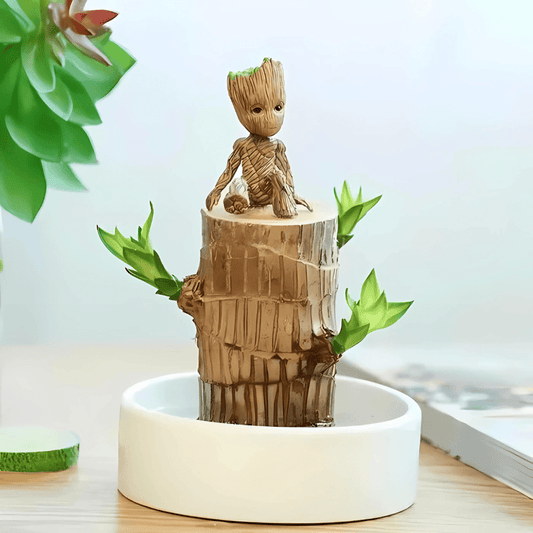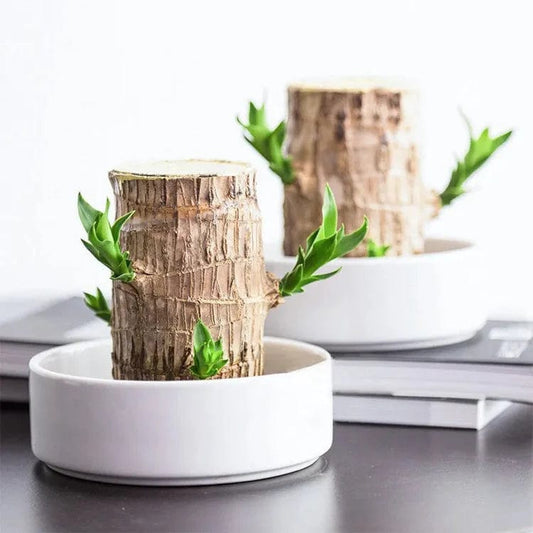How to mulch and avoid mistakes?

Mulching: Essential for the Health and Aesthetics of Your Garden
Mulching, this gardening technique where a layer of material is placed on the surface of the soil, is crucial. It suppresses weeds, retains moisture and regulates temperatures in the root zone.
Other benefits of mulch include managing water runoff and erosion, improving soil structure, reducing maintenance, and preventing weed seed germination.
Mulch also improves the visual appeal of beds and borders.
The two main types of mulch are organic and inorganic. Organic mulches are made from plant materials such as shredded bark, wood chips, compost, manure, fallen leaves, grass clippings, straw and pine needles.
Inorganic mulches are inert materials such as gravel, rock, landscape fabric and plastic.
How and When to Mulch Your Garden?
Here are tips on using mulch in your landscape
HOW TO APPLY MULCH?
For organic materials, apply a layer of mulch 5 to 10 cm deep. For a fine mulch like compost, a layer of 5 cm is sufficient.
Coarser materials such as wood chips or straw can be applied up to 10 cm deep.
Inorganic mulch like gravel or stone can be applied 1 to 2 inches deep.
For winter protection in colder climates, use a thick layer of mulch to insulate plants.
Too much mulch can cause roots to suffocate and make it difficult for water and fertilizer to penetrate the soil surface.
Mulch that is too deep can also attract pests. Mulch applied too thin may be less effective in controlling weeds.
Use a shovel, fork or your hands to distribute the mulch around the plants. Spread the mulch in an even layer. Use gloves to protect your hands.
When laying down mulch, keep it several inches away from plant trunks or crowns to prevent rot or stunted growth, and to discourage pests.
WHEN TO APPLY MULCH?
The best time to apply mulch is in spring or fall.
Spring Mulching: In most areas, it is best to wait until mid tolate spring to allow the soil to warm up. Applying mulch too early can slow soil warming and stunt plant growth.
- Also in the spring, remove any heavy mulch applied in the fall from around the base of the plants to allow the soil to warm more quickly.
- Fall Mulch: Lightweight organic materials such as fallen leaves, pine needles, straw and grass clippings help insulate plant roots during colder months and moderate freeze/thaw cycles that can lift plants out of the ground. Wait until after the first hard frost to apply fall mulch.
CHOOSING THE RIGHT MULCH FOR THE RIGHT PLACE
The type of mulch to use depends on the areas to be mulched and your goal. Mulching for trees and shrubs will be different from mulching for vegetable plots.
Organic mulching will improve soil and plant health, while inorganic mulching provides no improvement to the soil.
-
Trees, shrubs, foundation plantings and shrub borders: Shredded bark mulch or bark chips are the most common types of mulch for trees and shrubs, adding a touch decorative to the landscape.
Avoid piling mulch high around the base of tree trunks, which is known as volcano mulching. This can lead to rotting or damage from rodents and wood-eating insects. Apply 2 to 3 inches of mulch to the drip line (outer circumference of branches) and keep mulch several inches from the base of trees and shrubs. -
Mixed garden beds and borders: Ornamental beds will benefit from an annual application of a nutrient-rich mulch such as compost or shredded bark which will decompose quickly.
Avoid placing mulch directly on the crown of herbaceous perennials, which can stunt growth. Two to three inches of mulch is enough. -
Vegetable plots: Edible crops grow quickly and need plenty of nutrients and water to thrive. Use mulch like compost, straw, and grass clippings that will decompose quickly to feed the plants.
For perennial edible crops such as berry bushes and fruit trees, use wood products such as shavings or shredded bark which will decompose more slowly.
Avoid placing mulch that has been treated with pesticides or other chemicals on edible crops. In the fall, the old mulch can be worked into the soil to decompose and enrich the soil over winter. -
Driveways: The best organic materials for driveways are shredded bark or wood chips. These will need to be renewed every 1 to 2 years, depending on the size of the material.
Wood chips will last longer than shredded bark. Apply a layer of 5 to 7 cm and spread evenly for better stability. Gravel and crushed stone last longer and are permeable, allowing for good drainage. Use 1 to 2 inches of stone material and rake into an even layer.
CONSIDERATIONS WHEN CHOOSING AND USING MULCH
Here are some things to consider when using mulch:
- Avoid chemically treated products. Synthetic mulch such as landscape fabric, rubber and plastic can leach chemicals into the soil, harming beneficial soil organisms and polluting the soil. Do not place treated grass clippings or other organic matter around edible crops. Avoid using wood products that have been treated with dyes or other chemicals.
- Protect pets. Some dogs like to chew and swallow wood shavings or stones, which can cause potentially life-threatening digestive problems. Cocoa bean hull mulch contains toxic compounds that can be harmful to dogs and cats.
- Climatic and regional differences:
- Dark mulch like black plastic or dark-colored rocks can be beneficial in cooler climates to help warm the soil, but can overheat in warmer regions, damaging plant roots. Light-colored mulches are reflective and will stay cooler.
- Dry mulch such as sawdust, wood chips and straw can become a fire hazard in hot, dry climates. Keep mulch away from homes, garages and outbuildings or use a less flammable mulch.
- Wood products are commonly used in northern climates, while pine straw is more readily available and used in the South.
- Inorganic mulching with gravel and rock mulch is more typical in desert regions and with water-efficient landscapes where plants have lower maintenance needs.

PREPARE THE BEDS FOR MULCHING
- Eliminate weeds to reduce the chances of them growing through the mulch.
- Clean up any leaves or other debris from the surface of the soil.
- Prune all dead, damaged or diseased parts of trees, shrubs and perennials.
- Remove old mulch, which can harbor pests and diseases. Discard old mulch if it is suspected of having pests or diseases. Clean mulch can be buried in the soil to provide nutrients, or added to the compost pile.
- Rake the ground to level the surface and remove large stones.
- If the soil is dry, water the area thoroughly to moisten it before applying mulch.
- In more weedy areas, spread a layer of newspaper over the soil surface before applying mulch

FREQUENCY OF REPLACING MULCH
Organic mulches decompose and will require more frequent replenishment than inorganic mulches such as rocks or stone.
Fine mulch like shredded bark, compost and grass clippings decompose more quickly than bulky wood chips. Large chips will last longer than smaller pieces.
Replenish the mulch when it becomes thin or you see bare spots. Fine mulch will require replenishment every 1 to 2 years; large wood chips can last for several years. Inorganic mulch is intended to be more permanent.
POSSIBLE PROBLEMS WITH MULCHING
- Too much mulch can prevent the flow of water and nutrients, attract pests, or smother dormant and newly emerging plants, stunting their growth. Apply no more than 5 to 10 cm of mulch and avoid placing mulch against the base of trees and shrubs or on the crowns of perennial plants.
- Felting can occur with some mulches, including yard waste materials such as leaves and grass clippings. This can prevent the flow of water and nutrients to the root zone. Rake the mulch periodically to aerate it. A mulch mower can be used to shred the leaves into small pieces, making them less likely to mat and allowing them to decompose more quickly to nourish the soil.
- Mold or fungus can form on mulch if it stays too wet. In shadier areas that take longer to dry, apply the mulch in a thinner layer. Rake the mulch periodically to aerate it and reduce watering. If the problem persists, remove the old mulch and spread it on a tarp in a sunny location for 1 to 2 weeks to dry, then reapply. It can also be replaced with fresh mulch.
- Insects, including harmful pests such as termites, are attracted to damp, dark conditions and can crawl under mulch. To deter insects, add mulch in a thinner layer and rake periodically to aerate it. Aromatic wood mulches such as cedar, cypress and eucalyptus help repel pests. Keep mulch 15 to 30 cm from building foundations.
- Burning of plant roots or leaves can occur if the manure mulch is not aged enough. Buy finished manure in bags or in bulk from soil companies. If you use farmyard manure, let it age for 1 to 2 years before using it.
FREQUENTLY ASKED QUESTIONS
-
What should I add before mulching?
For a more durable solution against weeds, geotextile felt can be laid over the soil surface before applying organic or inorganic mulch. -
Can I put mulch directly on the ground?
In most cases, mulch is placed directly on the soil surface. For best weed control, spread a layer of newspaper or cardboard over the soil surface and cover with compost, bark or other organic materials. -
How to prepare the soil for mulching?
Remove weeds and other debris and level the soil surface before applying mulch. If the soil is dry, moisten the area first.








































